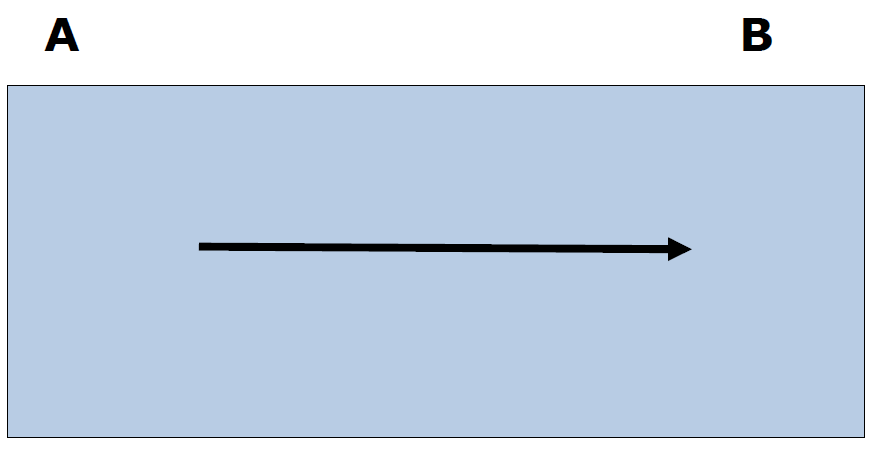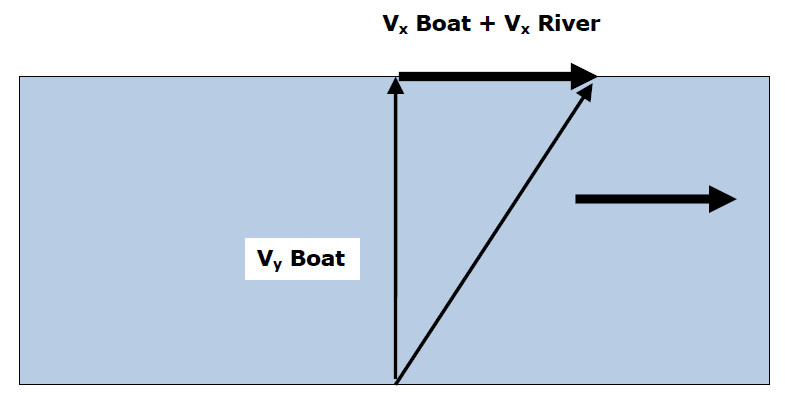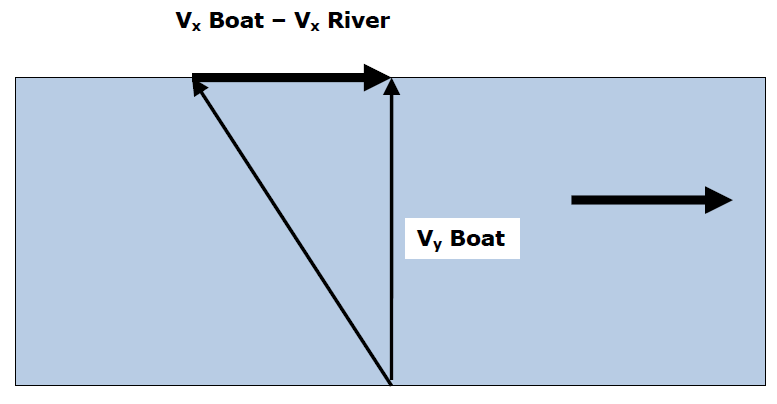|
Relative Velocity
River with current. Label upstream and downstream
A upstream , B downstream
Ex 1) A boat's speed in still water is 1.85 m/s. If the boat is to travel directly across a river whose current is 1.20 m/s, at what upstream angle must the boat head?
sinӨ = [1.20 m/s]/[1.85 m/s]
Ө = 40.5° upstream
Crossing a River
When a boat crosses a river,
Only Vx changed
Vr = Velocity of river Vbx = Boat's x velocity Vby = Boat's y velocity Find Vx' Vx' = Vx' = Vx'=
Path B Vx' = Vr Path A Vx' = Vbx - Vr Path C Vx' = Vbx + Vr
Downstream
Upstream
Vx' = Vboat +/- Vriver
dx , dy?
dy = Vyt
Ex 2) A boat's speed in still water is of 10. m/s. The boat moves downstream across the river at an angle of 37 degrees from the shoreline and reaches opposite shore at point B. If the velocity of the river is 3.0 m/s, find the time of the trip and distance between A and B. The width of the river is 36 m.
dx = Vxt
Finding t
dy = 36m
dy = Vyt = VsinӨt = 36 m
36 m = 10 m/s[sin37]t
t = 6 sec
dx = Vxt
Finding Vx Vx = Vx boat + Vx river
Vx of Boat
Vx = 10 m/s[cos37] = 8 m/s Vx River = 3 m/s
Vx = 11 m/s
t = 6 sec
dx = Vxt
dx = 66 m
ŠTony Mangiacapre.,
- All Rights Reserved [Home]
Established 1995 |







